- Home
- J. F. Penn
Pentecost. An ARKANE Thriller (Book 1) Page 3
Pentecost. An ARKANE Thriller (Book 1) Read online
Page 3
“We need to talk about your stone, and Faye. Just give me ten minutes and then you can leave if you need to. We’ll deal with the bodies in your office as well.”
Morgan was unmoved and silent. He continued, “I’m going to show you something now so you know I’m telling the truth. Can I open my collar very slowly?”
She nodded, the weapon unwavering in her hands. Keeping one hand raised, he slowly peeled back the collar of his shirt, revealing a tan leather string which he pulled up to show her a stone hanging round his neck. It was not exactly the same as hers, but similar enough. If he had a stone, Morgan thought, then he must know more than her. Fry had not finished explaining the significance of the stones, let alone why her family was involved. She lowered the gun.
“OK, let’s talk, but I need details quickly. I want my sister protected and I want answers now.”
Jake nodded.
“You’ll have them soon. Let’s go.”
The men opened the van door into a warehouse sized room. There were a few workstations, banks of computers and maps pinned to the walls. Morgan thought it looked like a police crime scene investigation unit, only messier. She climbed out, refusing the hand of one of the men. She turned to Jake, “So, where are we?”
“The Pitt Rivers, next to the Museum of Natural History. Don’t worry, we’re safe. Few people even know our base here exists.”
Jake led the way up through the main gallery of the museum to the rooms beyond. Dim floor lights illuminated the black and white stone tiles and iron gratings, but the torchlight also picked out figures within the wooden and glass cases crowding the main hall. It was a higgledy-piggledy place that Morgan had explored before, each case stuffed full of items, some with tiny handwritten notes from the original curator. She knew it had been founded in the nineteenth century, recipient of the collection of General Pitt Rivers, an avid collector in the field of archaeology and evolutionary anthropology. What distinguished his collection were the objects used in daily life as well as the ritual and sacred artifacts of the various peoples of the world.
The overall sense was of a museum crowded and alive in some way; the gods of such different cultures stuffed into tiny rooms, separated only by the glass of the cabinets. Morgan could almost imagine them stepping down from their cases in the dark of night, to wage war upon each other. The many handed Nataraja from India, skulls dripping from her neck and blue skin gleaming, wielded a sword at the head of a tribal god from Benin as Incan priest icons menaced the Native American totems. A flash of torchlight illuminated a case of giant wooden birds of paradise, their spiraling feathers like huge tongues. They crouched next to crocodiles and the jet black head of a bull, horns sharply tipped and glistening.
Here was the agonized face of a Christian martyr, neck twisted towards his God, desperate for release, next to a case of ceremonial knives for stripping the flesh from sacrificial animals. There a macabre toy cabinet, full of stuffed creatures with beady eyes that seemed to follow them past. The ghosts of dead children hung in their wake, puppets on tall sticks with limbs like dead trees, broken and dangling. As they walked through the main hallway, a huge Native American totem pole loomed over them, a squatting amphibian over the eyes of a huddled figure. Morgan felt the power of these objects in the semi-darkness. What was mere curiosity in the day had turned to mystic awe in the dark. She loved to come here and wonder at the collections, but this was experiencing the museum in a different, visceral way. She followed close to the man in front as he led her to the back of the main exhibition hall and then down some stairs into the crypt. What did it all have to do with the stone her father had given her, she wondered.
Jake turned back, clearly trying to break the ice.
“You probably know that William Pitt Rivers was an explorer, that he roamed the British empire collecting artifacts from now lost civilizations.” Morgan nodded.“What most people don’t know is that Pitt Rivers worked for a secret government agency on behalf of Queen Victoria. That agency has been investigating the supernatural for hundreds of years now. Many of the artifacts you can see in the museum are fakes but the real items are down here, a source of ancient power we are still investigating. You’d know the public face of the agency as the ARKANE Institute.”
Morgan ran her fingers along one of the dark wooden cabinets, her eyes widening at the name.
“I’ve been to some of the ARKANE conferences. I thought it was just an academic collective for research and publication.”
Jake smiled as they reached a large wooden door at the end of the hall.
“That’s just the official version. Welcome to the other side of ARKANE.”
He opened the door and Morgan gasped as she walked onto a small balcony overlooking five more levels below her with large glass windows opened to the lightwell. Each level had workstations with different artifacts spotlighted upon them, and equipment for dating and analyzing. The place was empty now, but she could see that during the day it was a working lab combining technology with ancient manuscripts to fathom the secrets these objects held.
“I knew there were levels below Oxford, as I’ve been in the stacks under the Bodleian library, but how could this all be kept secret?” she asked Jake. He grinned, raking his hands through his dark hair, tiredness evident in his eyes.
“There’s a whole city beneath Oxford, chambers of secrets from down the ages. Some were hollowed out by the early monks and used for teachings banned in the University, and others for the secret societies that have always flourished in the company of powerful men. Occult knowledge has always needed its protectors and the ARKANE Institute is just one in a long line. The secrets are only known to a few, but now you need to know about this particular one because the stone you’re wearing puts you in danger.”
Morgan touched the worn leather around her neck.
“So what’s going on? We need to protect Faye and her family if those men are coming for the stones. We each have one.”
Jake indicated the stairs leading down into the complex.
“A team is on the way to her house now so she and her family will be safe, but we need to talk. Come down to the research center and I’ll tell you what we know about these stones and why the timeline is so critical.”
Woodstock. Near Oxford, England.
May 18, 10.32pm
David Price took another long sip of the Chilean pinot noir. It was his third glass and only now was some kind of inspiration starting to swirl around him. This was becoming a habit. He frowned and put the glass down, trying to concentrate on the sermon in front of him. Even though the parish was small, he owed them the best he could give, even if some liquid stimulation was needed to write his thoughts these days. His flock relied on him to give them something to think about on Sundays and he was also trying to improve his speaking so he might be invited to lecture at larger parishes and conferences.
It was difficult to reconcile a certain amount of ambition with the call to humility his profession demanded. He preferred to frame his aspiration as the desire to share the wisdom of God with more people, but he knew his deeper motivations. The pulpit was a powerful place to stand, to feel both physical and spiritual authority. He reveled in being the center of attention for that short time each week, to feel the gaze of the parishioners on him and to look back into their eyes, some questioning, some devoted. If he was honest, there were eyes he sought to look into more often, God forgive him. If only the Church of England had something like Catholic confession, where he could repent, do penance and move on. Then he could believe his sins were washed clean every week. But his personal relationship with God had stalled, and so his sins were piling up in front of him.
David shook his head, trying to clear the thoughts that cluttered his mind. He was reaching the edge between insight and melancholy. The wine needed to stop, not least because he knew Faye had noticed how many bottles they were getting through in a week. He could hear her in the kitchen, the squeaking of the tea towel as she dried dishes
from dinner. She was listening to some talk show on the radio but it was faint and he couldn’t make out the words. She knew the noise bothered him when he was working. He frowned again. They had a wonderful daughter, his job as parish priest was respectable and Faye loved helping the community. They were seen as a loving, happy couple and even though David doubted the reality beneath the drama they played out, it seemed that Faye was content in her part. So he took another swig of his wine and carried on writing about the shade of Samuel appearing to Saul and how it related to the spirit world in the 21st century.
Pitt Rivers Museum, Oxford, England.
May 18, 10.45pm
Morgan followed Jake down into a sparsely furnished room with high tech equipment and a flat wall-sized computer screen. One of the men with them sat down to work a laptop. An image of a rough hewn stone appeared on the screen, similar to hers but carved differently. There were markings on it but it was otherwise unremarkable. Her stone still hung around her neck on the soft leather cord that her father had given to her. The one on screen had a silver chain and was also different to the one Jake wore.
She sat at one of the desks while he leaned against the wall beside the screen. His athletic body was relaxed but alert, muscles taut in tanned forearms that could be seen under his rolled up shirt sleeves. Morgan thought he gave the impression of a powerful jungle cat, his dark amber flecked eyes adding to the illusion. She watched him as he spoke,
“You need to understand the story behind the stones in order to grasp their importance right now. It’s tightly bound into the history of the early Church, so some is established history and some is myth.”
Morgan half-smiled, “and the truth lies somewhere in between, I suppose?”
“Yes, whatever you call truth, that is. Let me tell you what we know.”
The screen flashed to a map of Israel, then to Jerusalem’s Western wall.
“The story goes back to the Resurrection itself. The gospels and the Christian tradition say that Jesus was crucified and the eleven remaining Apostles waited after his death, not knowing what would happen next.”
Morgan cut in, “Yes, Matthew’s gospel tells of an earthquake that opened the door of the tomb and the Apostles realized Jesus had risen from the dead. But how is that related to what’s happening now?”
The screen moved on to show an open cave door in a garden. “The myth of the stones says that the Apostles took some of the broken rock from the tomb of the risen Christ, as a kind of evidence for the resurrection. They broke it into pieces and used it as the lots cast for the twelfth Apostle, Matthias.”
Morgan said, “OK, so far that could fit with the book of Acts.”
Jake pointed at the screen.
“The story goes on to say that the Apostles carved the pieces of rock into amulets to wear around their necks as a symbol of their brotherhood.”
Morgan leant forward now, engaged with the story and the images that spoke to her of her own life obsession with religion and myth. Could it be possible that she wore a stone with such history?
“There’s no extant tradition I know of this myth but I could imagine such a thing happening. The symbolism of the stone is pervasive in Christian myth, like Peter, the rock upon which the Church is built. Yes, I see. Carry on.”
The picture on the screen changed to a fiery tornado, an image of wind and fury, fire streaming out in bursts as it whirled. Jake continued. “The myth goes on to say that the power of the stones comes from the occasion of Pentecost, when the spirit of God touched the Apostles and gave them the power of healing, speaking in multiple tongues and the ability to convert many to their cause. It’s said that the force of wind and fire, combined with the power of Christ’s resurrection, became embedded in the stones themselves. When the disciples died or were martyred the stones were hidden and passed down through a network of Keepers, who kept the Pentecostal flame alive through millennia.”
“Kind of like the Christian faith of each man of God contained within a talisman of sorts?” Morgan said.
“Yes,” Jake replied. “Over time, the stones became imbued with a mythic status and miracles were said to be performed when they were present. There were healings and mass conversions as well as the power of communication through strange tongues. The Keepers who wore them also found themselves possessed of a creativity so extreme that it was considered a God-given power.”
“So why aren’t these stones more well known?” Morgan asked.
“When the twelve left Jerusalem, they never met again, but took the gospel to the people and died at the far corners of the known world. Because of their latent power, the stones were kept secret, protected as holy relics and known only to a few Keepers in each lifetime.”
“But the biblical traditions vary when it comes to where the Apostles actually went,” Morgan argued. “Many of the Apostles just disappeared into history. How do you know where the stones ended up and who the Keepers are now, after so long?”
The screen changed to a map of the ancient world, with markers of different colors scattered across the near east, into north Africa, India and Europe. Morgan recognized it as similar to the one Fry had shown her.
“Exactly,” Jake said. “These pins represent the possible journeys of the twelve Apostles after Pentecost, where the stones may have ended up after they died. But it’s not known where they all are now or who the Keepers are, if indeed they still exist.”
“So how did you get your stone?”
“The ARKANE Institute holds this one, supposedly from the disciple Matthew Levi but I’m wearing it so that you would trust me enough to come with us. It was given to us by the Keeper in Athens before the Second World War. He also told us what he knew of this scattered brotherhood and how the stones had become lost over the millennia. He was worried that the Nazis would seek the power in the stones and wanted it more securely hidden.”
“So why the sudden interest in the stones now? Why the men in my office tonight?”
Jake signaled to the man at the laptop. The screen changed again to display an image of Earth, with a circling comet in a wide elliptical orbit.
“This is the Resurgam comet.”
“Isn’t that Latin for resurrection?” Morgan asked.
Jake nodded. “This comet is in a long orbit pattern around Earth. It’s calculated to return into the atmosphere in the next two weeks, triggering a series of stratospheric events. Scientists are already predicting it will cause extreme weather patterns in many parts of the world.”
“How is this related to the stones?”
Jake turned towards her, his eyes deep with concern. Morgan could see that something disturbed him deeply about this situation. “The comet was last in orbit in 33 AD.”
“When Jesus rose from the dead,” she marveled.
“And when the stones were empowered at Pentecost,” he finished for her.
“You’re sure of this?” Morgan asked.
“The comet is definitely coming and it explains the sudden interest in the stones. We believe that they’re being sought by a fringe religious organization that aims to use them to invoke the powers of Pentecost again, perhaps to trigger a fundamentalist uprising. The return of the comet could be seen as a catalyst for the power of the twelve.”
“But that’s crazy. These are just pieces of rock, even if they are two thousand years old. They can’t have any special power.”
“You might be wrong about that.” Jake turned and flicked open a file on the screen in front of them. It was an article from the Times of India dated only a few weeks before. The image of flames leapt out with a headline proclaiming miracles in the midst of a fiery storm. Morgan scanned the article quickly.
“Varanasi ... that could be the stone of Nathaniel.”
“The ARKANE researchers agree with you. The Apostle Nathaniel, also known as Bartholomew, supposedly died in India after taking the gospel there. A Christian nun disappeared on the night of the miracles and may have been murdered. We believe she
was a Keeper.”
“But who took the stone?”
“We don’t know yet, but a body was also found in Jerusalem at the church of St Matthias. He preached in Ethiopia but was killed in the holy city. Two mysteries relating to the Apostles along with the reported miracles was enough to get ARKANE interested enough to do some more research. Do you know why your father gave you and Faye the stones?”
Morgan stood up, rubbing her neck again to release the strain she felt both physically and emotionally in talking of her family.
“It’s complicated,” she said. “My parents were archaeologists, passionate about their work. They met on a dig in Turkey and fell in love amongst the ruins of Ephesus.”
Jake smiled and waited for her to continue. “Apparently these two stones were found in a commoner’s grave and considered of little value, so they kept them. Faye and I were conceived there, so the twin stones had an emotional value.”
“What happened to your parents?”
Morgan hesitated. The truth of what happened long ago was a story repeated in so many broken marriages, yet it had meant her life was never normal.
“They couldn’t hold a relationship together away from the dig, especially as their careers generated professional rivalry. My father hated the British weather and my mother just wanted peace, so they separated. My father took me to Israel and Faye stayed here. I don’t remember us ever being a family.”

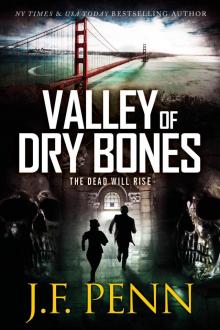 Valley of Dry Bones
Valley of Dry Bones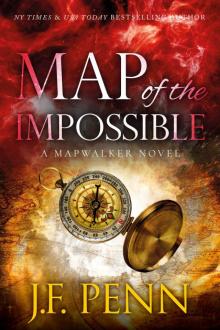 Map of the Impossible
Map of the Impossible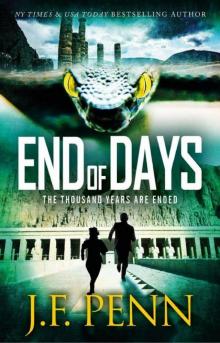 End of Days
End of Days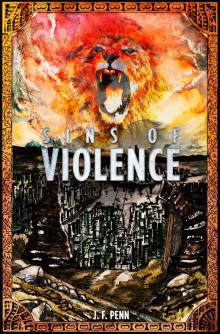 Sins of Violence
Sins of Violence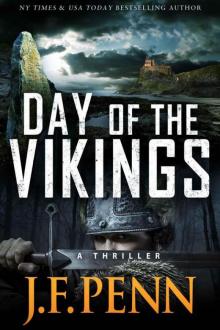 Day of the Vikings
Day of the Vikings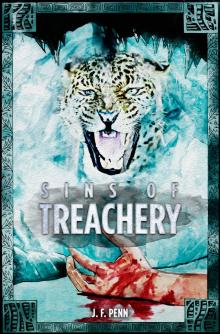 Sins of Treachery
Sins of Treachery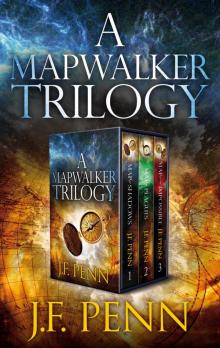 A Mapwalker Trilogy
A Mapwalker Trilogy Desecration
Desecration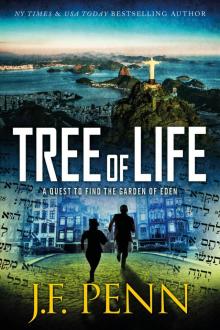 Tree of Life
Tree of Life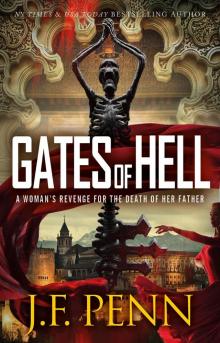 Gates of Hell
Gates of Hell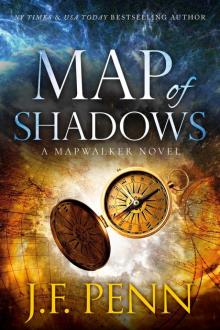 Map of Shadows
Map of Shadows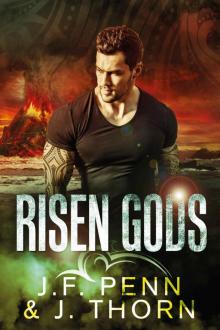 Risen Gods
Risen Gods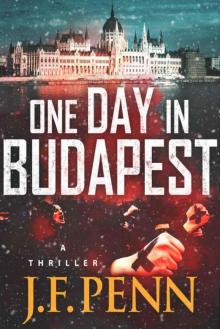 One Day In Budapest
One Day In Budapest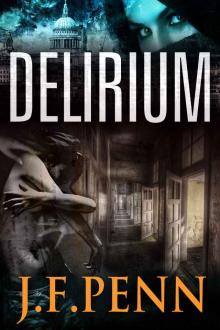 Delirium (London Psychic)
Delirium (London Psychic)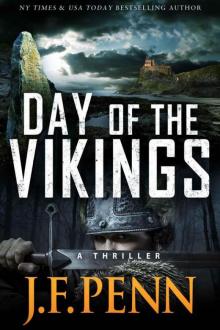 Day of the Vikings. A Thriller. (ARKANE)
Day of the Vikings. A Thriller. (ARKANE) Pentecost. An ARKANE Thriller (Book 1)
Pentecost. An ARKANE Thriller (Book 1) Deviance (The London Psychic Book 3)
Deviance (The London Psychic Book 3)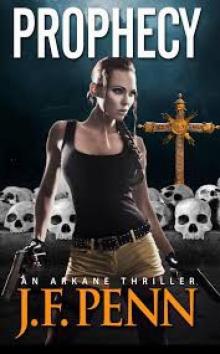 Prophecy. An ARKANE thriller. (Book 2)
Prophecy. An ARKANE thriller. (Book 2)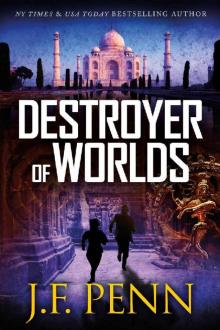 Destroyer of Worlds (ARKANE Book 8)
Destroyer of Worlds (ARKANE Book 8)